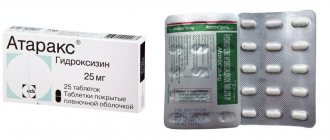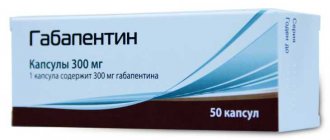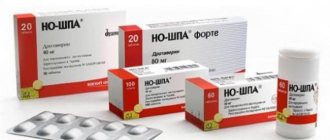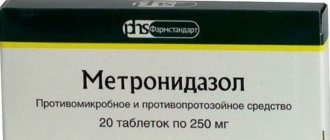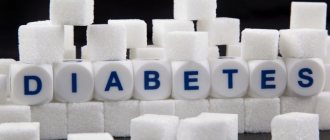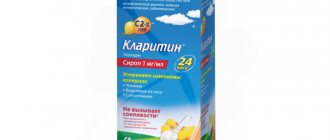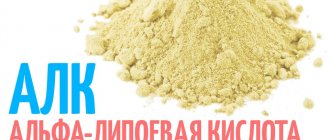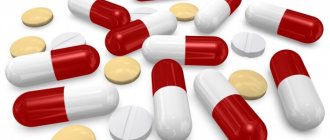A disease such as diabetes requires constant use of medications; sometimes the only correct treatment is insulin injections. Today, there are many types of insulin and every diabetic patient needs to be able to understand this variety of drugs.
In diabetes mellitus, the amount of insulin (type 1) or tissue sensitivity to insulin (type 2) is reduced, and to help the body normalize glucose levels, replacement therapy with this hormone is used.
For type 1 diabetes, insulin is the only treatment option. For type 2 diabetes, therapy is started with other drugs, but as the disease progresses, hormone injections are also prescribed.
Classification of insulin
The origin of insulin is:
- Pork. It is obtained from the pancreas of these animals, very similar to humans.
- From cattle. There are often allergic reactions to this insulin, since it has significant differences from the human hormone.
- Human. Synthesized using bacteria.
- Genetically engineered. It is obtained from pork using new technologies, thanks to which insulin becomes identical to human insulin.
By duration of action:
- ultra-short-acting (Humalog, Novorapid, etc.);
- short-acting (Actrapid, Humulin Regular, Insuman Rapid and others);
- medium duration of action (Protafan, Insuman Bazal, etc.);
- long-acting (Lantus, Levemir, Tresiba and others).
Human insulin
Short- and ultra-short-acting insulins are used before each meal to avoid a jump in glucose and normalize its levels. Medium- and long-acting insulins are used as so-called basic therapy, they are prescribed 1-2 times a day and maintain sugar within normal limits throughout for a long time.
Insulin production in the body, mechanism of action, properties
Insulin is produced by the pancreas when blood glucose levels rise.
The formation of the hormone can be divided into several stages:
- Initially, an inactive form of insulin is formed in the gland - preproinsulin . It consists of 110 amino acid residues created by combining four peptides - L, B, C and A.
- Next, preproinsulin is synthesized into the endoplasmic reticulum. In order to pass through the membrane, the L-peptide, which consists of 24 residues, is cleaved off. This is how proinsulin .
- Proinsulin enters the Golgi complex, where it will continue its maturation. During maturation, the C-peptide (consisting of 31 residues) is separated, which connects the B and A peptides. At this point, the proinsulin molecule splits into two polypeptide chains, forming the necessary insulin .
How insulin works
In order to release insulin from the granules in which it is now stored, the pancreas must be informed of an increase in blood glucose levels. To achieve this, there is a whole chain of interconnected processes that are activated when sugar levels rise.
- Glucose in the cell undergoes glycolysis and forms adenosine triphosphate (ATP).
- ATP controls the closure of potassium ion channels, causing depolarization of the cell membrane.
- Depolarization opens calcium channels, causing a noticeable influx of calcium into the cell.
- The granules in which insulin is stored react to this increase and release the required amount of insulin. Release occurs by exocytosis . That is, the granule merges with the cell membrane, zinc, which inhibited insulin activity, is split off, and active insulin enters the human body.
Thus, the human body receives the necessary blood glucose regulator.
Ultra-short and short-acting insulin
It must be remembered that the faster the effect of the drug develops, the shorter its duration of action. Ultra-short-acting insulins begin to work after 10 minutes of administration, so they should be used immediately before or immediately after eating. They have a very powerful effect, almost 2 times stronger than short-acting drugs. The hypoglycemic effect lasts for about 3 hours.
These drugs are rarely used in the complex treatment of diabetes, since their action is uncontrollable and the effect can be unpredictable. But they are indispensable if a diabetic has eaten and forgot to administer short-acting insulin. In this situation, an injection of an ultra-short-acting drug will solve the problem and quickly normalize blood sugar levels.
Short-acting insulin begins to work within 30 minutes; it is administered 15–20 minutes before meals. The duration of action of these funds is about 6 hours.
Insulin action schedule
The dose of fast-acting drugs is calculated by the doctor individually, taking into account the characteristics of the patient and the course of the disease. Also, the administered dose can be adjusted by the patient depending on the number of bread units consumed. For 1 unit of bread, 1 unit of short-acting insulin is administered. The maximum permissible amount for one-time use is 1 unit per 1 kg of body weight; if this dose is exceeded, severe complications are possible.
Short-acting and ultra-short-acting drugs are administered subcutaneously, that is, into the subcutaneous fatty tissue, this promotes a slow and uniform release of the drug into the blood.
To more accurately calculate the dose of short-acting insulin, it is useful for diabetics to keep a diary indicating food intake (breakfast, lunch, etc.), glucose level after meals, the drug administered and its dose, and sugar concentration after injection. This will help the patient identify a pattern of how the drug affects glucose specifically in him.
Short- and ultra-short-acting insulins are used for emergency assistance in the development of ketoacidosis. In this case, the drug is administered intravenously, and the effect occurs instantly. The rapid effect makes these drugs an indispensable assistant for emergency doctors and intensive care units.
By the way, we recommend reading the article Treatment of itching in diabetes mellitus in women and men
Table - Characteristics and names of some short- and ultra-short-acting insulin preparations
| Drug name | Type of drug by speed of action | Type of drug by origin | Speed of onset of effect | Duration of action | Peak activity |
| Apidra | Ultra-short | Genetic engineering | 0–10 minutes | 3 hours | In one hour |
| NovoRapid | Ultra-short | Genetic engineering | 10–20 minutes | 3–5 hours | After 1–3 hours |
| Humalog | Ultra-short | Genetic engineering | 10–20 minutes | 3–4 hours | After 0.5–1.5 hours |
| Actrapid | Short | Genetic engineering | 30 minutes | 7–8 hours | After 1.5–3.5 hours |
| Gansulin R | Short | Genetic engineering | 30 minutes | 8 ocloc'k | After 1–3 hours |
| Humulin Regular | Short | Genetic engineering | 30 minutes | 5–7 hours | After 1–3 hours |
| Rapid GT | Short | Genetic engineering | 30 minutes | 7-9 hours | After 1–4 hours |
It should be taken into account that the rate of absorption and the onset of action of the drug depends on many factors:
- Doses of the drug. The greater the amount of substance administered, the faster the effect develops.
- Site of drug administration. The effect begins most quickly when injected into the abdominal area.
- The thickness of the subcutaneous fat layer. The thicker it is, the slower the absorption of the drug.
Insulin tablets: origin
Companies involved in drug development have long been thinking about a new form of drug that could be administered to diabetics without injections.
Insulin tablets were first developed by Australian and Israeli researchers. People who participated in the experiment confirmed that tablets are much more convenient and better than injections. Taking insulin orally is faster and easier, and its effectiveness is not reduced at all.
After conducting experiments on animals, the researchers plan to test the insulin substitute in tablets and among people. After this, mass production will begin. Now India and Russia are completely ready to produce drugs.
Intermediate- and long-acting insulin
These drugs are prescribed as basic therapy for diabetes mellitus. They are administered daily at the same time in the morning and/or evening, regardless of meals.
Medications with an average duration of action are prescribed 2 times a day. The effect after injection occurs within 1–1.5 hours, and the effect lasts up to 20 hours.
Long-acting insulin, or otherwise prolonged, can be prescribed once a day; there are drugs that can be used even once every two days. The effect occurs 1–3 hours after administration and lasts for at least 24 hours. The advantage of these drugs is that they do not have a pronounced peak of activity, but create a uniform, constant concentration in the blood.
If insulin injections are prescribed 2 times a day, then 2/3 of the drug is administered before breakfast, and 1/3 before dinner.
Table - Characteristics of some drugs with medium and long duration of action
| Drug name | Type of drug by speed of action | Speed of onset of effect | Duration of action | Peak activity |
| Humulin NPH | Average | 1 hour | 18–20 hours | After 2–8 hours |
| Insuman Bazal | Average | 1 hour | 11–20 o'clock | After 3–4 hours |
| Protophan NM | Average | 1.5 hour | Up to 24 hours | After 4–12 hours |
| Lantus | Long | 1 hour | 24-29 hours | — |
| Levemir | Long | 3–4 hours | 24 hours | — |
| Humulin ultralente | Long | 3–4 hours | 24-30 hours | — |
There are two types of insulin therapy.
Traditional or combined . It is characterized by the fact that only one drug is prescribed, which contains both the basic agent and short-acting insulin. The advantage is a smaller number of injections, but this therapy is weakly effective in treating diabetes. With it, compensation is achieved worse, and complications occur faster.
By the way, we recommend reading the article Can you die from diabetes?
Traditional therapy is prescribed to elderly patients and persons who cannot fully control the treatment and calculate the dose of a short drug. These include, for example, people with mental disorders or those who cannot care for themselves.
Basis-bolus therapy . With this type of treatment, both basic drugs, long- or medium-acting, and short-acting drugs in various injections are prescribed. Basal-bolus therapy is considered the best treatment option, it more accurately reflects physiological insulin secretion and is prescribed to all patients with diabetes whenever possible.
Differences between different types of insulin
Insulin is a vital drug. People suffering from diabetes cannot do without this remedy. The pharmacological range of medications for diabetics is relatively wide.
The drugs differ from each other in many aspects:
- Degree of purification;
- Source (production of insulin involves the use of human resources and animals);
- Availability of auxiliary components;
- Concentration of the active substance;
- pH of the solution;
- Potential opportunity to combine several drugs at once. It is especially problematic to combine short-acting and long-acting insulin in the same therapeutic regimens.
Every year in the world, leading pharmaceutical companies produce colossal amounts of “artificial” hormone. Insulin manufacturers in Russia also contributed to the development of this industry.
Every year, diabetics around the world consume over 6 billion units of insulin. Given the negative trends and the rapid increase in the number of patients with diabetes, the need for insulin will only increase.
Insulin injection technique
Insulin injections are carried out using an insulin syringe or pen. The latter are more convenient to use and dose the drug more accurately, so they are preferred. You can give an injection using a syringe pen without even taking off your clothes, which is convenient, especially if a person is at work or in an educational institution.
Insulin pen
Insulin is injected into the subcutaneous fatty tissue of different areas, most often the front of the thigh, abdomen and shoulder. It is preferable to inject long-acting drugs into the thigh or outer gluteal fold, short-acting drugs into the stomach or shoulder.
A prerequisite is to comply with the rules of asepsis, you must wash your hands before the injection and use only disposable syringes. It must be remembered that alcohol destroys insulin, so after treating the injection site with an antiseptic, you must wait until it dries completely and then begin administering the drug. It is also important to retreat at least 2 centimeters from the previous injection site.
What is insulin responsible for, its role in the human body
The hormone insulin is involved in all metabolic processes in the human body. But its most important role is carbohydrate metabolism . The effect of insulin on carbohydrate metabolism is to transport glucose directly into the cells of the body. Fat and muscle tissue, which make up two-thirds of human tissue, are insulin dependent. Without insulin, glucose cannot enter their cells. In addition, insulin also:
- regulates amino acid absorption
- regulates the transport of potassium, magnesium and phosphate ions
- enhances fatty acid synthesis
- reduces protein breakdown
A very interesting video about insulin is below.
The answer to the question: “Why is insulin needed in the body?” is the regulation of carbohydrate and other metabolic processes in the body.
Free drugs
It is important to understand that not all medications required for the prevention and treatment of diabetes will be provided free of charge. Such medicines are included in a special list, which is created and approved by the Ministry of Health. This list includes free essential diabetic medications. If a person needs one or another remedy that is not on the list, he can turn to the specialists of the medical commission for help. Perhaps they will look at an individual case and decide to provide the drug for free or at a significant discount.
Compound
Insulin belongs to the pharmacological group of the same name. Its name comes from the word insula, which means “island” in Latin. This is a protein compound produced by the islets of Langerhans in the pancreas. 1 ml of the drug contains 40 units of the active substance. This is a product of the same name, which differs in composition depending on the origin of the raw materials from which it is produced. There are two types of insulins: animal and human (artificially synthesized by genetic engineering). They are indicated by special markings:
- C - pork;
- G - beef;
- H - human.
There are also mixed or combined types of medicine. Depending on the degree of purification, the drug is:
- monocomponent (MC);
- monopeak (MP).
Depending on these factors, the medicine may be called:
- SMP;
- GMP;
- MMC.
Insulin has the INN name “Insulin-isophane”, this is how it is listed in the recipe, and is not prescribed by the trademark or manufacturer. In addition to the active substance, the drug contains additional components. Their list differs depending on the type of drug. In addition to simple insulin, pharmacology offers short, ultra-short (flexpen), medium and long types of medicine. Prolongation of the drug is determined by the purity of insulin, that is, its purification from the hormone precursors.
Insulin drugs
Why does the pancreas stop producing insulin?
The immune system helps a person fight viruses, microbes, and destroys foreign cells, including cancer cells, which can form during a person’s life. There is a constant renewal of cells in different organs: old ones die, and new ones are formed, replacing them.
Location of the pancreas
This also applies to the beta cells of the pancreas. The immune system normally distinguishes well between “self” cells and “foreign” cells.
In patients with type 1 diabetes, a “breakdown” occurs in the immune system, and the body begins to perceive its own cells as foreign and kills them.
Heredity and environmental influences (most often viruses) change the properties of β-cells.
There are a number of reasons why the pancreas does not produce insulin.
Table - Reasons why insulin production may decrease
The following processes occur:
- Autoantigens are released.
- Cells of the immune system (MF macrophages, DC dendritic cells) transmit processed autoantigens to T lymphocytes, which, in turn, begin to perceive them as foreign.
- Part of the T-lymphocytes that have turned into specific cytotoxic autoaggressive lymphocytes (CTL).
- Inflammation of the pancreas and destruction of β-cells develops.
This process is long and occurs at different speeds: from several months in small children to several years in adults.
Autoimmune destruction of β-cells
According to scientific research, in people with a hereditary predisposition to type 1 diabetes, specific antibodies (IAA, ICA, GADA, IA-2β) are detected in the blood already several years before the onset of the disease, which, without destroying the β-cell, are early markers risk of developing type 1 diabetes.
Unfortunately, the immune system retains memory for β-cell antigens, so the process of their destruction is very difficult to stop.
By the way, we recommend reading the article Diabetic angiopathy of the lower extremities
Scientists believe that in type 1 diabetes, beta cells can be restored. Even if 90% percent of all beta cells die, the remaining 10% can recover. However, for this it is necessary to stop the “aggressive” reaction of the immune system. Only then will it be possible to cure this disease.
Stages of development of type 1 diabetes
Only insulin administration can be a true treatment for type 1 diabetes.
Some studies have been aimed at studying the possibility of stopping the “aggressive behavior” of the immune system towards beta cells by using several groups of drugs. However, no reliable positive results were obtained.
Scientists associate great hope with the possibility of using monoclonal antibodies that can change aggressive immunity in a favorable direction, that is, reduce the autoimmune reaction in the pancreas.
These studies are very promising, since in the absence of control over immunity, even transplantation of islets of Largehans and the use of stem cells will be meaningless.
Insulin and muscles
Muscle cells are susceptible to the action of insulin. GLUT-4, which is an independent glucose transporter protein, enters muscle tissue cells. GLUT-4 transports glucose into the intracellular space across the cell membrane through facilitated diffusion.
The energy status of the cell is of great importance.
- If there is not enough glucose or glycogen in a muscle cell, then insulin signals it to use the incoming glucose as fuel and begin creating glycogen from glucose stores.
- If the muscle cell is full of glucose, glycogen and intramuscular triglycerides, then insulin will signal the cell to do whatever it needs to do in case of a low energy state. It will convert excess glucose into fat through primary lipogenesis.
Disinfectant components
Disinfection of insulin preparations is of great importance for the safety of the patient, since they are injected into his body and spread through the bloodstream to all internal organs and tissues.
Some substances that are added to insulin not only as a disinfectant, but also as preservatives have a certain bactericidal effect. These include cresol, phenol and methyl parabenzoate. In addition, a pronounced antimicrobial effect is also characteristic of zinc ions, which are part of some insulin solutions.
Multi-level protection against bacterial infection, which is achieved by adding preservatives and other antiseptics, helps prevent the development of many serious complications. After all, repeated insertion of a syringe needle into a vial of insulin could cause contamination of the drug with pathogenic bacteria.
However, the bactericidal properties of the solution help destroy harmful microorganisms and maintain its safety for the patient. For this reason, diabetic patients can use the same syringe to perform subcutaneous insulin injections up to 7 times in a row.
Another advantage of having preservatives in insulin is that there is no need to disinfect the skin before the injection. But this is only possible with the use of special insulin syringes equipped with a very thin needle.
It must be emphasized that the presence of preservatives in insulin does not have a negative effect on the properties of the drug and is completely safe for the patient.
General information
Insulin plays an important role in the body. It is thanks to it that the cells and tissues of the internal organs receive energy, thanks to which they can function normally and do their job. Insulin is produced by the pancreas. And with the development of any diseases that lead to damage to its cells, it becomes the cause of a decrease in the synthesis of this hormone. As a result, sugar that enters the body directly from food is not broken down and settles in the blood in the form of microcrystals. This is how diabetes mellitus begins to develop.
But there are two types - the first and the second. And if with T1DM there is partial or complete dysfunction of the pancreas, then with type 2 diabetes, slightly different disorders occur in the body. The pancreas continues to produce insulin, but the body's cells lose sensitivity to it, due to which they stop absorbing energy fully. Against this background, sugar is not completely broken down and also settles in the blood.
And if for T1DM the use of drugs based on synthetic insulin, then for T2DM to maintain optimal blood sugar levels it is enough to simply follow a therapeutic diet, the purpose of which is to reduce the amount of daily consumption of easily digestible carbohydrates.
But in some situations, even with type 2 diabetes, following a diet does not give positive results, since over time the pancreas “wears out” and also stops producing the hormone in the required quantity. In this case, insulin preparations are also used.
They are produced in two forms - tablets and solutions for intradermal administration (injection). And speaking about what is better, insulin or tablets, it should be noted that injections have the fastest effect on the body, since their active components are quickly absorbed into the systemic bloodstream and begin their effect. And insulin in tablets first enters the stomach, after which it undergoes a splitting process and only then penetrates the blood.
The use of insulin medications should only occur after consultation with a specialist.
But this does not mean that insulin tablets are low in effectiveness. It also helps lower blood sugar levels and helps improve the general condition of the patient. However, due to its slow action, it is not suitable for use in emergency situations, such as hyperglycemic coma.
Insulin for children
In the treatment of diabetes mellitus in children and adolescents, a special place is occupied by ultra-short insulins - NovoRapid and Humalog.
When administered subcutaneously, these drugs have an accelerated onset and culmination of effects, parallel to the degree of post-alimentary hyperglycemia, and a shorter duration, which allows these drugs to be administered immediately before meals, avoiding frequent snacks if desired.
The latest achievement in the field of insulin therapy is the introduction of Lantus insulin into clinical practice. It is the first peakless human insulin analog with 24-hour action.
“Detemir” is also a peakless analogue with a long-lasting effect; its prolonging effect is achieved by attaching a chain of fourteen B-chain fatty acid residues at the 29th position. The drug is administered twice a day.
Insulin tablets for children are not yet available for sale.
What is insulin resistance?
Insulin resistance is a decrease in the sensitivity of body tissues to the action of the hormone insulin. A common cause of the development of this disease is the regular consumption of large amounts of sugar and carbohydrates with a high glycemic index - and obesity and diabetes mellitus associated with such a diet. Also, insulin resistance is usually observed with a sedentary lifestyle.
The consequences of insulin resistance are numerous metabolic disorders - from gaining a significant amount of excess weight in the abdominal area, ending with a deterioration in the synthesis of a number of hormones. In men, testosterone levels may noticeably decrease, and in women, the symptom of polycystic ovaries may develop, leading to excessive growth of body hair.
In turn, abdominal obesity is characterized by the growth of visceral fat surrounding the internal organs. The danger lies in the fact that insulin resistance tends to progress, further affecting fat growth. The functioning of the entire cardiovascular system is gradually disrupted, the level of bad cholesterol increases, and joints begin to suffer.
Insulin - what is it?
Insulin is a pancreatic hormone that regulates the flow of glucose (the body's main source of energy) into the blood. Insulin resistance causes tissues to lose their ability to use glucose, and it accumulates in large quantities in the blood. Despite the fact that there is a lot of energy in the body, the cells cannot absorb it - in response to which even more insulin is produced.
Gradually, the reserves of the pancreas are depleted, and the person develops chronic fatigue. At the same time, the body tries to restore vigor by connecting stress hormones - cortisol and adrenaline. The adrenal glands that produce them are also depleted due to insulin resistance. All this leads to periods of loss of strength becoming longer, and the body loses the ability to regulate metabolism.
Consequences of insulin resistance¹:
- Abdominal obesity
- Cardiovascular diseases
- Increased blood pressure
- Diabetes mellitus type 2
Mixed
These combination drugs include short-acting and medium-duration insulins in different proportions - 50 to 50 or 90 to 10. They are considered very convenient, since their use makes it possible to reduce the number of injections. But they are not widely used in pediatrics due to the need to change the dosage of short-acting insulin in the patient depending on glycemic values. In case of stable diabetes mellitus (especially in the first years), good compensation is achieved with mixed insulin.
Insulin at a pharmacy costs from 350 to 8,000 rubles. depending on the manufacturer and dosage.
Additional information and testimonials about use
The use of insulin in tablet form can be chosen instead of injections, and this type of drug will be justified for some time. But reviews from doctors indicate that the pills at a certain point may stop lowering blood sugar. This is why it is important to use a glucose meter at home.
Over time, the reserve of beta cells in the pancreas decreases, which immediately affects blood sugar. In particular, this is evidenced by glycated hemoglobin, which reflects the average level of sugar in the blood over three months. All diabetics need to undergo such tests and insulin tests regularly.
If the acceptable value is exceeded, you should consider getting a prescription for insulin. Data from medical practice indicate that in Russia approximately 23% of patients with type 2 diabetes receive insulin - patients with high blood sugar and glycated hemoglobin, which starts at 10% and above.
This therapy, according to many, is a lifelong dependence on insulin injections. Of course, you can refuse insulin, but this threatens a return to high sugar levels and the occurrence of various kinds of complications.
With properly selected insulin therapy, the patient can be resilient and active.
The danger of using insulin is a lethal dose
Insulin has earned a “bad” reputation due to the likelihood of developing such side effects as hypoglycemia. There are warning messages about this on almost every forum. Many similar reviews indicate that hypoglycemia can develop even with a slight overdose and lead to death. It has been scientifically and practically proven that the minimum lethal dosage is 100 units or a full syringe.
There are cases where people survived even after a dosage of 3000 units of insulin. If a person is completely alone, then a unclear consciousness may prevent you from calling an ambulance. Coma develops either within a few minutes or several hours. Timely entry of glucose into the blood helps to avoid death, and, therefore, the risk of death is much lower than is mistakenly believed.
Advantages and disadvantages of insulin
Peptide hormone has the following advantages:
- relatively low price per course;
- free sale in pharmacies;
- low probability of buying a fake;
- low likelihood of side effects;
- no negative consequences after completing the course;
- no toxicity;
- minor pullback phenomenon;
- increased anabolic effect;
- lack of androgenic effect;
- compatibility with anabolic steroids and other drugs;
Insulin is non-toxic to the liver and kidneys and does not impair potency.
The disadvantages include a rather complex reception scheme. There is a fairly significant increase in subcutaneous fat. There is a possibility of developing hypoglycemia.
Intermediate drugs
This type of drug has a prolonged effect.
There are 2 types of medicines:
- based on human cells (their synthesis), such as: Protafan, Homolong, etc.;
- animal based, for example: Berlinsulin, Iletin 2 and others.
Medium insulins have their effect within 15 minutes after entering the body, but the effect of complete breakdown is achieved after a significant period of time.
This group of drugs contains substances on different active bases, for example, zinc and isophane.



